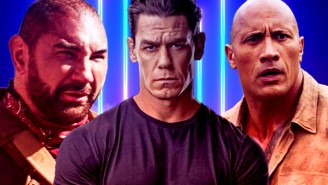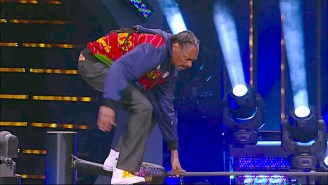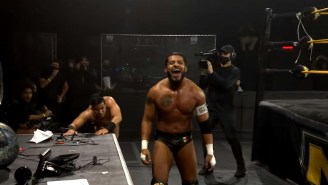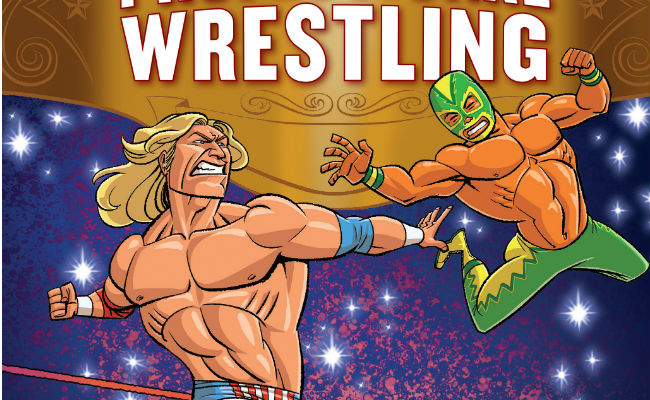
There’s been a lot of crossover between pro wrestling and comics over the decades, but none quite like Aubrey Sitterson and Chris Moreno’s The Comic Book Story of Professional Wrestling: A Hardcore, High-Flying, No-Hold-Barred History of the One True Sport. With writing by Sitterson (Straight Shoot podcast, G.I. Joe), art by Moreno (The Minions of Ka, World War Hulk: Frontline), letters by Rus Wooton, and colors by Len O’Grady, Brad Simpson, Allen Passalaqua, and Jay Moreno, this graphic novel will present the history of wrestling from it’s carnival origins to the present day in a new way.
We’re excited to share with you some brand new pages from the book’s Japanese wrestling section. (Pages are reprinted with permission from The Comic Book Story of Professional Wrestling copyright © 2018 by Aubrey Sitterson and Chris Moreno. Text copyright © 2018 by Aubrey Sitterson. Illustrations copyright © 2018 by Chris Moreno. Published by Ten Speed Press, an imprint of Penguin Random House LLC.)
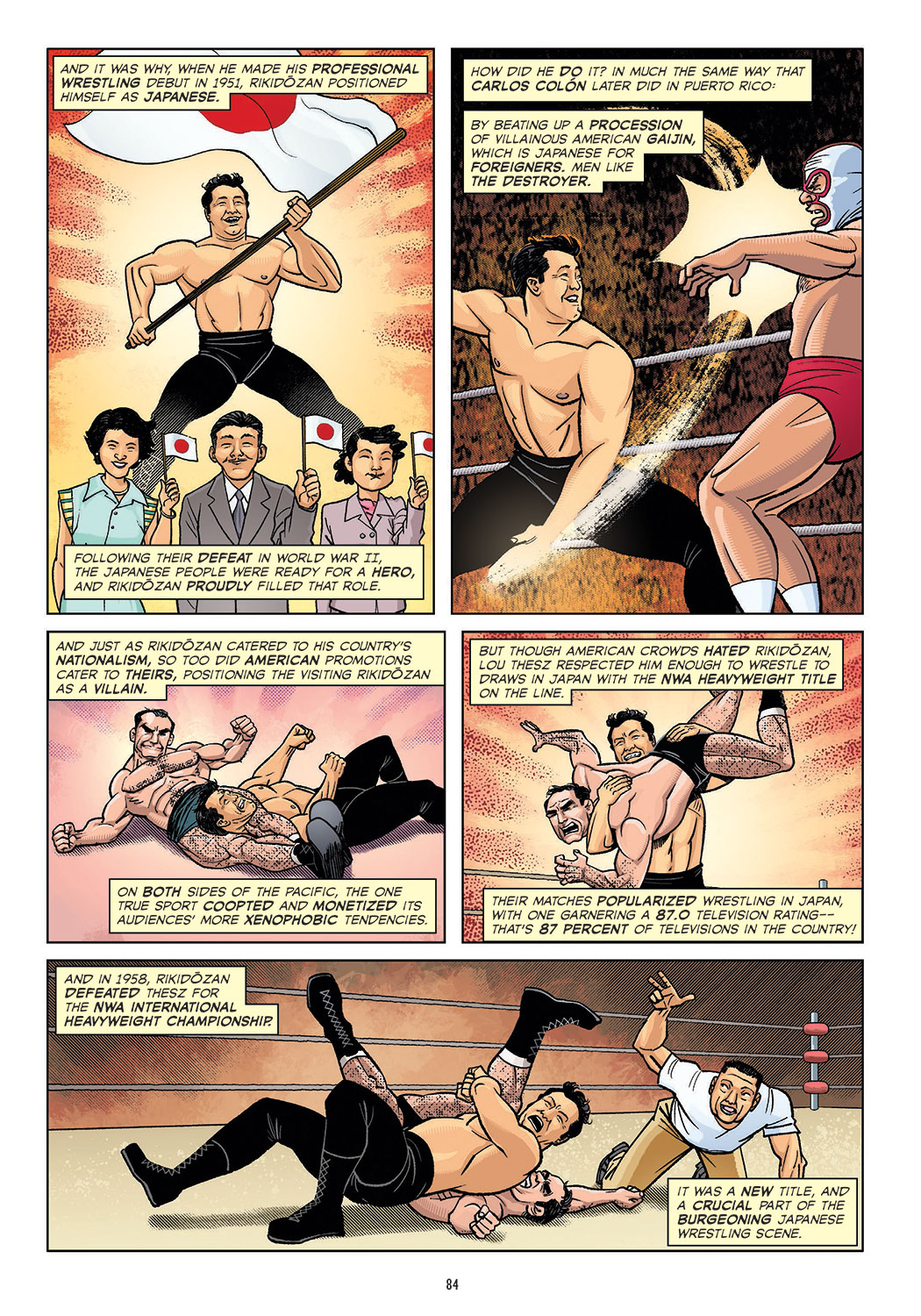
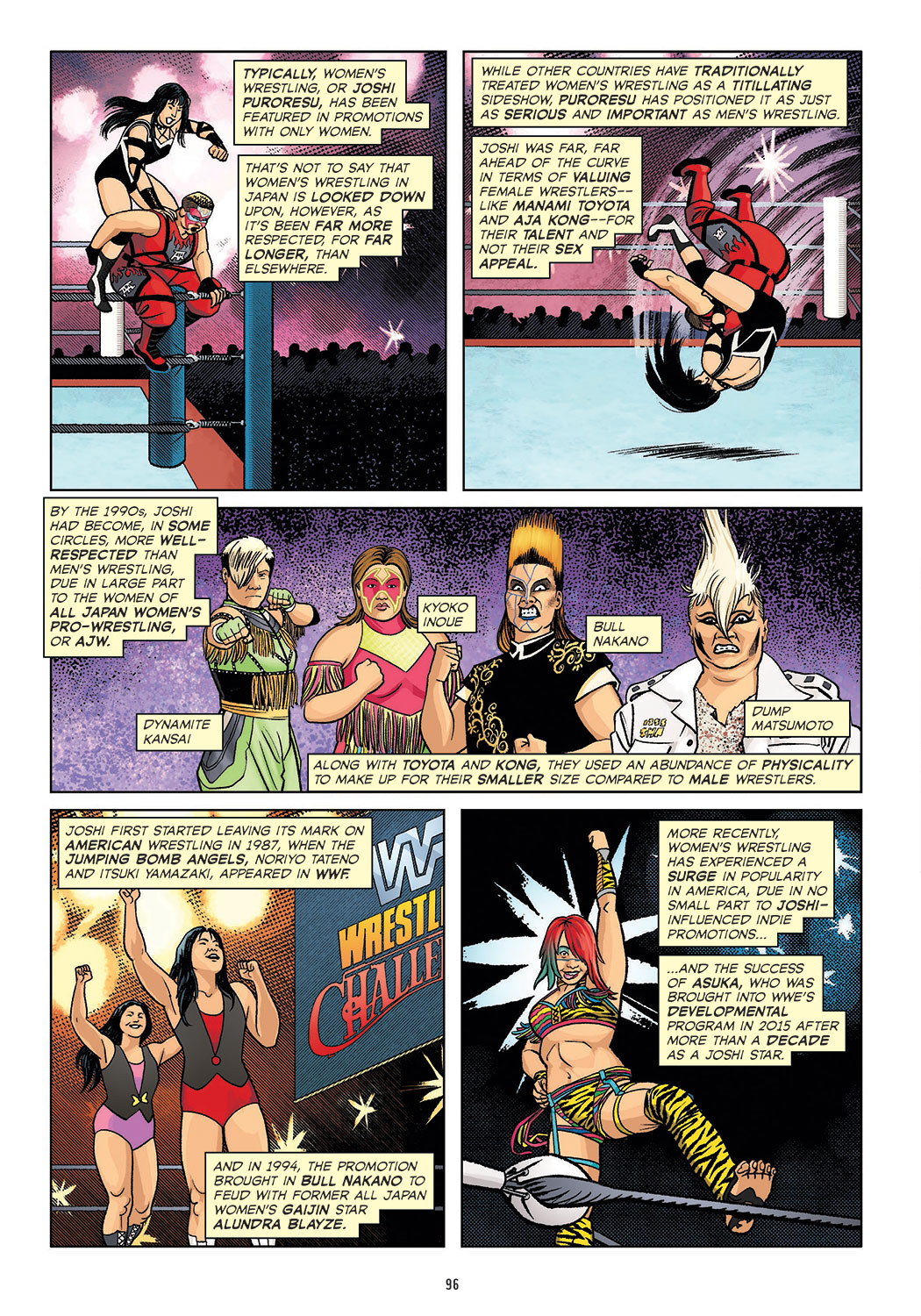
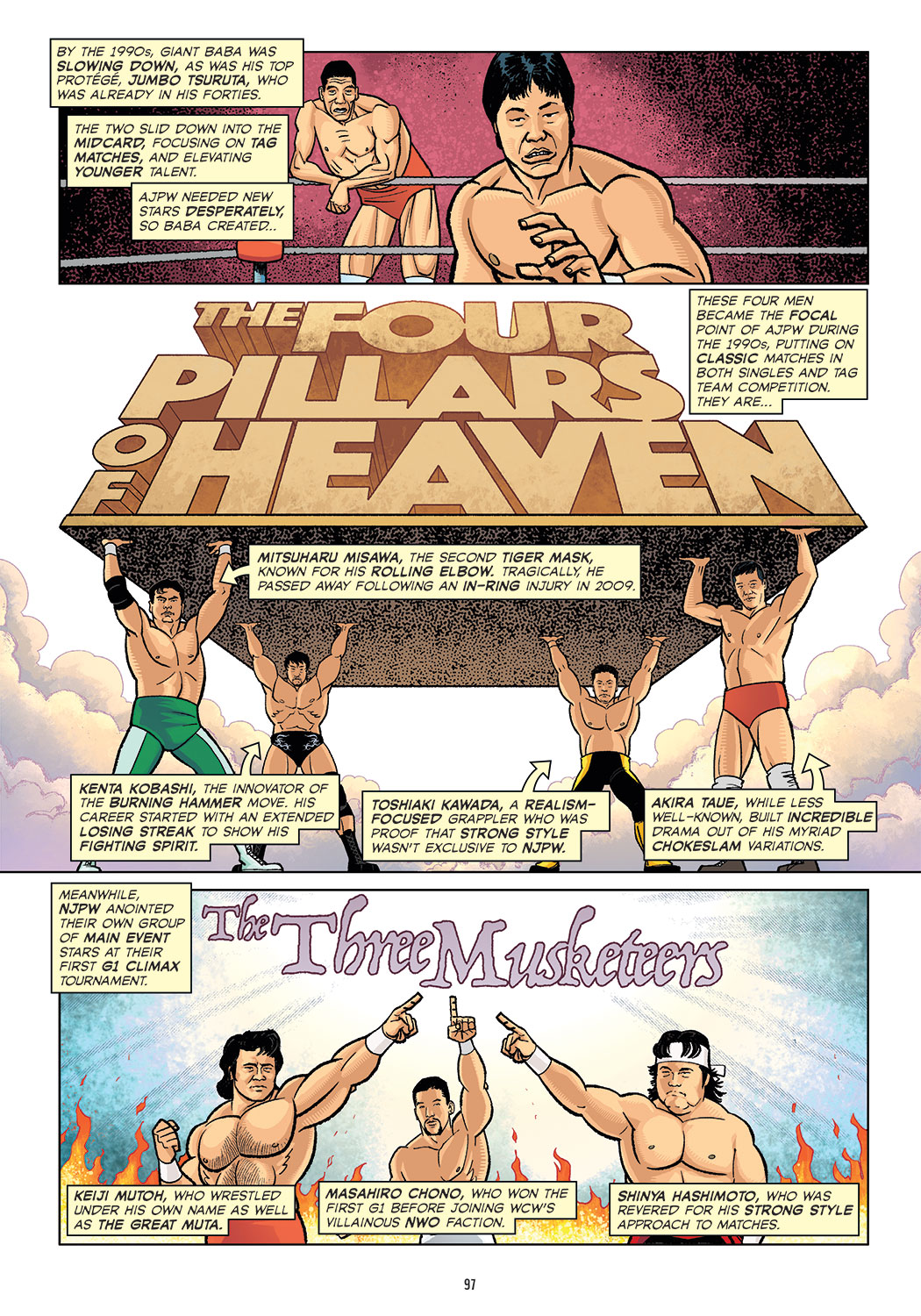
(You can also check out excerpts about lucha libre, the NWA, and pro wrestling’s carnival days elsewhere on the internet.)
We talked to Sitterson and Moreno about their approach to this graphic novel and what interests them about pro wrestling history.
With Spandex: How did you decide what events and people to feature in The Comic Book Story of Professional Wrestling?
Aubrey Sitterson: This was a tough one. There are a lot of big, obvious names that just had to be there – Thesz, Flair, Hogan, Austin, Rock, El Santo, Rikidōzan, Big Daddy – but hitting the top performers of each era only tells part of the story, right? And that’s the key thing: We wanted this to be a story, not just a series of anecdotes and fun facts.
Nothing like this project has ever been attempted in any medium: A full, comprehensive exploration of not just one wrestler or promotion or era, but the entirety of professional wrestling. In order to do it justice, we had to look at the entire history (which meant a ton of research), figure out the general thrust of it, the themes and repeating patterns, and then shave away anything doesn’t actually contribute to the story.
Of course, this means that we don’t cover everything, and I’m already bracing myself for all of the “How could you leave out ______?!” I’m confident, however, that not only did we include a lot – more than you would expect us to fit in 170 pages – but that the stories, events and people we chose to include will surprise long-time fans with facts and connections they didn’t know, while introducing new fans to the wonders of The One True Sport.
With Spandex: Were there any issues sorting fact from fiction/legend, truth from kayfabe?
Aubrey Sitterson: This is one of the best things about wrestling, right? The constantly moving, not at all clear lines between what’s real and what’s fake, and the audience’s complicity in the illusion. I went into this project expecting this to be one of the most difficult parts of working on it, but was actually pretty surprised at how cleanly things broke out. Of course there are instances – like the Montreal Screwjob – where opinions differ as to their legitimacy, but those are generally pretty rare, and we typically acknowledged the controversy in the text.
There’s this pervasive notion in wrestling fandom and even scholarship, that the artifice of wrestling is a somewhat recent development, and that fans’ awareness of it is even more recent than that. But the truth of the matter is that wrestling was mostly fixed as early as the late 19th century and that audiences got wise to the deception early in the 20th. This – the idea that wrestling has always been fixed, has always been the same – is one of a few thesis statements that we return to again and again.
So, outside of digging through the hyperbole and hearsay that fills a lot of wrestling books – especially self-mythologizing autobiographies – it was shockingly easy to keep fact separated from fiction!
With Spandex: What, to you, is the most interesting period of wrestling history?
Aubrey Sitterson: Oh, this is a tough one. As much as I adore reading about the glory days of the NWA territories I think that it gets edged out by the 1920s and 30s. This is the era when wrestling started to look like the wrestling we recognize today: Time limits, defined heroes and villains, finishes, promotions with defined rosters, even many still-popular moves…they all originated during this period. While the matches were most definitely fixed, there was still the possibility that someone could go off-script, which required that the performers have actual wrestling bonafides. They had figured out how to optimize The One True Sport for maximum drama and entertainment, but there was still enough of the carnival circuit in its DNA to make it feel rough and dangerous.
Chris Moreno: Artistically, the 70s and early 80s. So many great personalities, hairstyles, mustaches! I had a blast drawing them. Academically, the 20s and 30s, for the same reasons Aubrey mentioned. But also the raw spectacle of it. It’s very stripped down from what we know of pro wrestling today– just two big dudes in trunks whomping on each other. A lot of the vestiges of the circus strongman remained. Also, mustaches!
With Spandex: For Chris, how did depicting pro wrestlers/real people affect your approach to this project?
Chris Moreno: I think we were definitely looking to do a slightly cartoonier approach to the book, just because that kind of style lends itself to this kind of mainstream non-fiction. I’m a big fan of Will Eisner’s “P.S. Magazine”, and also the Paradox Press “Big Book of…” series, so I based a lot of the style of the art on those. But I also wanted to be respectful to these real-life figures, because we also get into some more serious themes. There’s a range of styles and approaches depending on what we’re talking about. I also didn’t want to do grotesque caricatures of these people, because it’s not about mocking the art form, or playing it ironically, like, “isn’t this so kitschy and weird?” It’s about showing folks who may not be familiar with pro wrestling why it’s so cool and exciting, and, at times, weird, but in a way that’s interesting and to be celebrated. And, at the same time, for the hardcore wrestling heads, it’s about trying to showcase the stuff that they know and love in the most dynamic way possible.
The Comic Book Story of Professional Wrestling will be released October 2, 2018. It is currently available for pre-order on Amazon, at any book store, and (starting in July) at comic stores.


